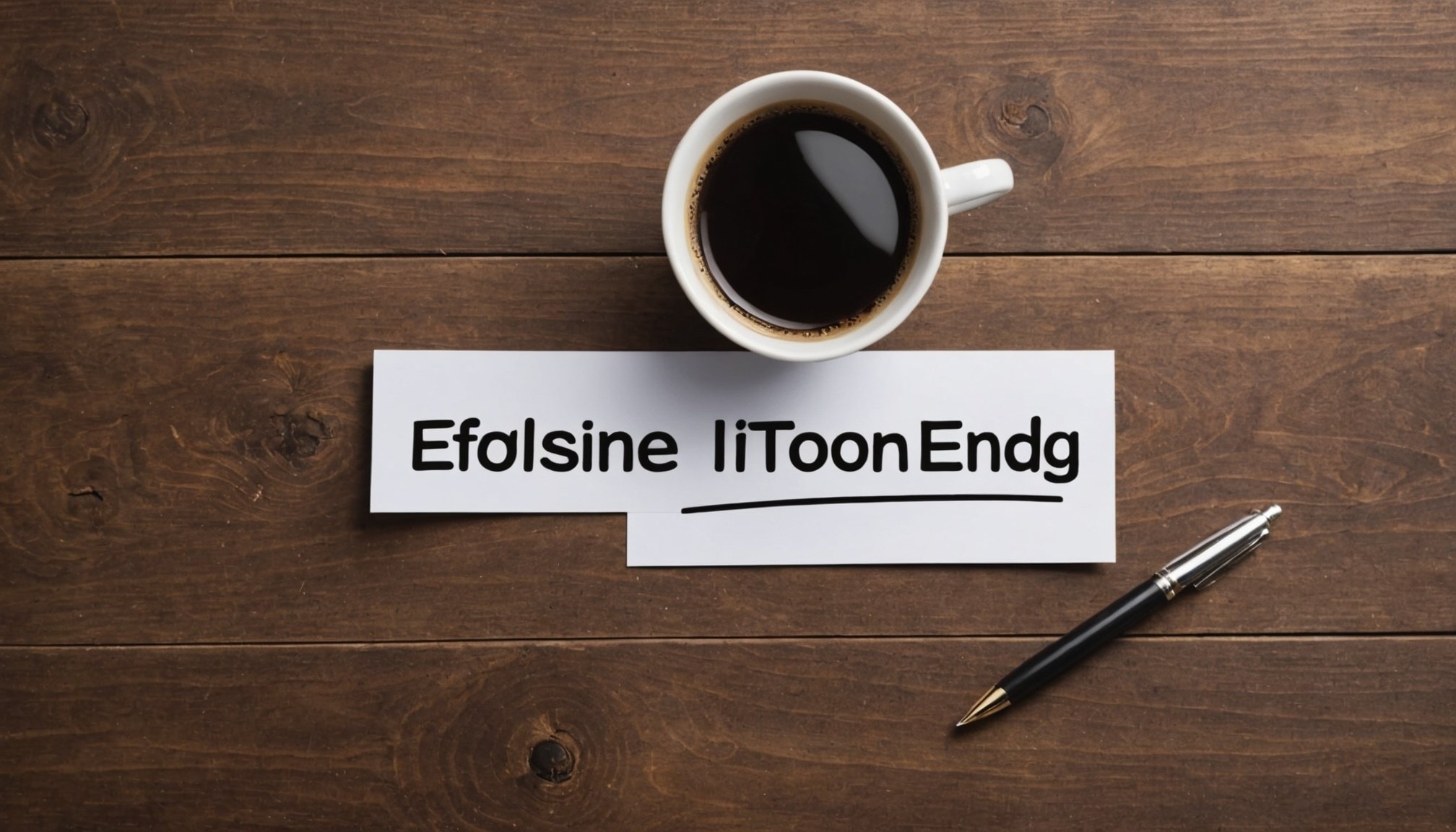Efficient month-end close improves financial accuracy and speeds decision-making. Proven best practices streamline data collection, reconciliation, and reporting while reducing errors and fraud. Automation tools like Tipalti can cut close times by 25%, enhance compliance, and free teams for strategic analysis. Adopting these methods ensures a reliable closing process that supports growth and financial clarity across industries.
The Importance of an Efficient Month-End Close Process
Efficiently managing the month-end close process is vital for delivering timely, accurate financial reports. These reports form the backbone of strategic decision-making, guiding leaders in planning and growth initiatives. When the process is optimized, companies benefit from enhanced data reliability, better compliance, and readiness for audits.
Also read : How Can Advanced Ceramics Improve Heat Resistance in UK Manufactured Engines?
Month end close best practices include establishing clear workflows that prioritize accuracy over speed. Automation tools and standardized procedures help reduce the cycle time, often bringing the period down from ten days to closer to five. Such practices ensure key financial data is processed reliably and swiftly, minimizing the risk of errors or omissions.
Automation plays a pivotal role in streamlining workflows. For example, leveraging sophisticated financial management software automates repetitive tasks such as data entry, reconciliations, and report generation. This not only shortens the closing timeline but also improves accuracy and reduces fraud risks, a point emphasized in the latest insights from top industry sources.
Have you seen this : Transform your online presence with expert corporate web design
Coordination among departments is equally essential. Clear communication, detailed checklists, and well-defined roles safeguard process consistency. Using a month end close checklist template, teams can systematically track progress and identify bottlenecks early. For example, a standardized process flowchart can aid in visualizing each step—from data collection through to final review—ensuring everyone is aligned.
Regular review and process improvement also contribute to ongoing efficiency. Incorporating feedback from previous closures and adopting proven strategies, such as continuous monitoring and risk mitigation techniques, help refine workflows over time. These enhancements align with best practices for month end reconciliation and support audit readiness, ensuring compliance and operational integrity.
To stay ahead, organizations should explore specific examples like the month end close process flowchart and use tools designed for automation and collaboration. For additional insights and a detailed month end close best practices template, you can visit the dedicated page on this topic, which offers extensive guidance for optimizing your financial closing procedures.
Key Steps in the Month-End Close Framework
A robust month end close process mapping sharply increases both accuracy and efficiency in financial operations. The month end close process mapping typically begins with data collection, followed by account reconciliation, and finishes with careful preparation and review of month end financial statements. Focusing on these foundational steps not only drives monthly financial close accuracy tips but ensures consistent, reliable results for all stakeholders.
Data Collection and System Integration
Efficient data collection stands at the center of streamline financial close workflow and month end close process optimization. Leveraging month end close software solutions and automated tools, organizations adopt best practices such as real time data integration for close operations and automated data gathering. This minimizes manual entries, reducing errors in financial close cycles for faster, more dependable close cycle time reduction strategies.
Integrating accounting subsystems—like ERP platforms—facilitates seamless month end close process documentation across multiple entities. System integration ensures data is quickly validated, an essential month end data validation technique that directly drives month end close error prevention. Standardized data checks and validation provide clarity for stakeholder review, strengthening both financial close best practices for small businesses and large organizations.
Account Reconciliation Techniques
Account reconciliation is the backbone of best techniques for month end reconciliation and a top priority in any month end close checklist for accountants. Automating cash, bank, and balance sheet reconciliations addresses common challenges such as maintaining data integrity during close operations. Introducing month end closing task automation through top month end close software solutions eliminates repetitive manual reconciliations, cutting time and ensuring consistent accuracy in month end accounting reconciliation methods.
To avoid pitfalls like overlooked transactions or double entries, leading organizations rely on ledger comparison and standard audit trails. This aligns with month end close control frameworks and internal controls for month end close, while constant alignment with audit readiness during financial close maintains compliance.
Financial Statement Preparation and Review
When preparing the official month end financial statements, maintaining structure and thoroughness is paramount. Financial close documentation standards demand that balance sheets, income statements, and cash flow statements be reviewed through a strict framework. Standardized processes and the use of a month end close checklist template enforce the consistency and completeness required for closing the books month end importance.
A collaborative approach to review, engaging the finance team coordination month end, enhances cross-functional collaboration close process and interdepartmental communication. This supports reducing closing cycle bottlenecks and aligns month end close with audit requirements, ensuring that adjustments are detected early and documented clearly.
Consistently applying month end closing process best practices and process optimization enables rapid, reliable, and compliant closing cycles. As teams embrace advanced analytics for month end close and continue improving interdepartmental communication close, the organization lays the foundation for sustained month end close continuous improvement.
Best Practices and Strategies for Accelerating the Close
Standardizing Procedures and Streamlining the Workflow
To optimize the month end close process, start by establishing standard operating procedures and a comprehensive month end financial closing checklist. A standardized checklist, tailored to your company’s workflow, ensures accountability over all closing tasks. Listing deadlines and sub-tasks reduces ambiguity, addresses month end close common challenges, and facilitates more efficient handoffs between team members. Standardization removes confusion, allowing teams to concentrate on efficient month end closing steps and ensuring monthly financial close accuracy tips are implemented consistently.
Documenting the month end close process through a clear, up-to-date template provides an audit trail for compliance during month end close. This supports best techniques for month end reconciliation and assists in aligning month end close with audit requirements. A benefits of standardized close processes approach not only improves control but also minimizes errors. Perform regular reviews and continuous improvement exercises to adapt procedures and remain agile in response to changing business needs.
Leveraging Automation and Technology Solutions
Automation transforms the month end close lifecycle. Selecting month end close software solutions—integrated with ERP systems—can automate repetitive and high-volume tasks, like invoice processing or data validation. Tools such as Tipalti provide AI-driven invoice auto-coding and automated payment reconciliation, directly accelerating close cycle time reduction strategies and reducing errors in financial close.
Cloud-based platforms enable real time data integration for close cycles and automate the month end financial statements preparation process. Integration with platforms like Oracle NetSuite or SAP supports streamlined workflows and robust internal controls for month end close. These systems reduce manual intervention, decrease closing cycle bottlenecks, and ensure key performance indicators for close process are met efficiently.
Enhancing Cross-Functional Collaboration
Improving interdepartmental communication close is essential for an efficient month end close. Define clear month end close team roles and responsibilities across finance, operations, and IT. Effective month end close meetings, scheduled ahead of time, uncover bottlenecks and allow preemptive solutions for handling last-minute adjustments close. A regular cadence of pre- and post-close discussions ensures transparency, enhances finance team coordination month end, and creates momentum for continuous process improvement close cycles.
To streamline financial close workflow, facilitate the sharing of real-time updates and use of dashboards. This shared visibility into progress and roadblocks empowers teams to address top month end close challenges as they occur. Cross-functional collaboration close process initiatives are vital for maintaining data integrity during close and supporting month end close lifecycle management across the entire organisation.
Managing Deadlines, Workload, and Performance
Key closing deadlines management prevents unnecessary overtime and stress, aligning month end close priorities with organisational capabilities. Assigning specific month end close team roles and responsibilities ensures accountability, while monitoring progress through month end close metrics tracking highlights areas for intervention or support.
Use a combination of month end close checklist templates and real-time dashboards to ensure tasks are completed and bottlenecks resolved. Continuous monitoring in close process cycles—by tracking audit readiness during financial close and leveraging feedback through continuous feedback in close process—enables effective adjustments and long-term improvement.
By employing robust month end close control frameworks and reinforcing the benefits of checklist-driven close processes, organizations not only expedite closing the books month end, but also achieve ongoing month end close process optimization that supports scalable, accurate, and transparent financial reporting.
Common Challenges and How to Overcome Them
Addressing Data and Process Errors
Inaccurate data entry and coding mistakes remain among the most significant month end close common challenges, slowing down even the most efficient month end closing steps. Implementing rigorous internal controls with systematic reviews helps catch these issues early, minimizing rework and improving overall close cycle time reduction strategies. Automation, especially through advanced month end close software solutions, plays a central role in reducing errors in financial close—tools that offer automated data validation and reconciliation quickly highlight mismatches and missing entries, supporting month end close financial controls and keeping your records accurate.
Standardizing the month end close process documentation further reduces confusion. By training staff on standardized close process risk management and workflows—and using clear month end close checklist templates—companies streamline financial close workflow and improve audit readiness during financial close. This not only leads to more accurate month end financial statements preparation but also establishes dependable key performance indicators for close process that teams can monitor for ongoing improvements.
Overcoming Manual and Complex Procedures
Manual, repetitive tasks are a major bottleneck in the monthly closing process. Leveraging technology for faster close—such as task automation and ERP system integration—addresses these challenges by automating recurring activities like month end journal entries and reconciliations. This modern approach is central to month end close process optimization and ensures that every step is tracked, reducing bottlenecks and human error.
Simplification is also key; by reviewing and potentially redefining the chart of accounts, organizations can clarify classification, enforce consistency, and use best techniques for month end reconciliation. Checklists and templates boost completeness and serve as living documents, supporting continuous monitoring in close process and streamlining cross-functional collaboration close process. This kind of structure supports successful month end close process mapping and communication, which benefits finance team coordination month end and enhances month end close stakeholder engagement.
Ensuring Audit Readiness and Compliance
Audit readiness during financial close demands thorough and accessible documentation of procedures, adjustments, and approvals. A robust month end close audit trail—supported by internal controls for month end close—demonstrates compliance during month end close and fosters confidence when external inspectors review month end reporting best practices. Maintaining detailed documentation, coupled with continuous feedback in close process, helps organizations align month end close with audit requirements and update processes as regulations or business needs change.
Periodic process reviews and updates, documented per financial close documentation standards, feed into continuous process improvement close cycles and further reduce closing cycle bottlenecks. This not only supports achieving month end close accuracy but also makes cost reduction during month end close possible, allowing businesses to establish best month end close turnaround times, maintain strong compliance, and quickly adapt to emerging challenges.
Benefits of a Standardized and Automated Close Process
A meticulous approach to the month end close process optimization delivers higher accuracy and mitigates common challenges such as misstatements or delays. Standardizing close steps—by implementing a uniform month end financial closing checklist—guarantees essential tasks are performed with precision each cycle. Teams see immediate gains: error rates drop, data integrity strengthens, and achieving month end close accuracy becomes a routine rather than a struggle.
Efficient month end closing steps, driven by automation, dramatically reduce manual interventions. These improvements streamline financial close workflow by assigning clear month end close team roles and responsibilities and leveraging technology for repetitive data gathering and reconciliations. For example, month end closing task automation detects anomalies faster, preventing late adjustments while supporting real-time data integration for close review. Best techniques for month end reconciliation—such as automated PO matching and AI-powered invoice coding—cut down on repetitive checks and enable earlier finalization of balances.
One major outcome is that closing cycle time reduction strategies, especially through month end close software solutions and documented month end close process mapping, allow businesses to generate timely month end financial statements preparation. This agility empowers organizations to respond quickly to changing circumstances and supports informed decision-making. Enhanced visibility into workflows, supported by close process risk management and effective internal controls for month end close, enables early pinpointing of outliers and discrepancies, facilitating immediate action.
Standardized and automated processes also bolster compliance during month end close and provide robust audit readiness during financial close. By establishing month end close control frameworks, organizations easily generate process audit trails and consistently meet key closing deadlines management requirements. This transparent environment simplifies responding to auditors and aligns the month-end close with audit requirements, reducing the risks associated with missed controls or lack of documentation.
Resource allocation benefits are evident too. Automation lightens the manual load, granting staff more time for high-value analysis, forecasting, and strategic planning. Cross-functional collaboration close process tactics—like clear process communication plans and documented roles—minimize misunderstandings and stress. This clarity helps with managing multiple entities close process demands or dealing with complex intercompany reconciliations, where standardization and automation reduce closing bottlenecks.
Continuous feedback in close process cycles further improves efficiency. Month end close continuous improvement, supported by regular process reviews and training and development for close teams, ensures organizations adapt to evolving best practices. Using a month end close checklist template and detailed month end close process documentation, finance functions can iterate on procedures, driving down errors and accelerating delivery of accurate reports—foundational for both audit trail creation and operational excellence.
In all, the benefits of standardized close processes and automation are closely tied to efficiency, accuracy, and improved organizational confidence in financial results. By prioritizing month end close process optimization and utilizing enhanced software, companies are positioned for stronger financial reporting, smoother audits, and greater business agility.
Integrating Technology and Automation in Month-End Close
Automation is the fastest route to an optimized month end close process. Using the principles of the Stanford Question Answering Dataset (SQuAD), the answer is simple: Automation reduces errors, accelerates reconciliation, and provides real-time data, making the month end close process more accurate and efficient. It minimizes manual entry, supports faster financial statement preparation, and streamlines workflow oversight for finance teams.
Automating your month end close process optimization delivers concrete improvements. Financial teams benefit from rapid reconciliation and generation of accurate financial statements. Repetitive or manual tasks, such as data validation and journal entry preparation, are ideal candidates for month end closing task automation. Leveraging technology for faster close also means real-time data integration for close, allowing for more informed business decisions and timely month end reporting best practices.
Recommended Software and Tools
Robust ERP and cloud-based financial management platforms are central to modern month end close software solutions. Tools such as Tipalti or Sage Intacct automate the collection of data and enforce standardized close processes across multiple entities. Automated reconciliation modules and journal entry solutions replace hours of manual accounting reconciliation methods, supporting efficient month end closing steps and boosting accuracy. Real-time dashboards and KPI tracking tools empower financial close best practices for small businesses and multinationals alike by providing a transparent view of all outstanding close activities, helping with month end close metrics tracking and identifying bottlenecks early.
Practical Tips for Effective Technology Adoption
Success in month end close process optimization depends on mapping existing workflows before selecting or implementing any automation solution. This step ensures that your new tools support all aspects of your month end close process documentation. Training and development for close teams is essential: a well-prepared team reduces month end close error prevention risks. Regular evaluation and optimization of system performance should become part of your monthly financial close accuracy tips—gather feedback, update your month end close checklist template, and refine your processes for continuous improvement.
Addressing Challenges in Automation Adoption
Automating the month end close process can introduce concerns regarding data security and compliance during month end close. Following internal controls for month end close and strong compliance practices help address these risks. Resistance to change is another common hurdle; employing change management and engaging stakeholders early is a practical month end close project management tip. Finally, integration is key: Ensuring your chosen month end close software solutions operate seamlessly within your existing ERP landscape minimizes workflow disruption and maintains the reliability of your close cycle time reduction strategies.
Automation, when thoughtfully applied, transforms financial operations. By focusing on robust technology, efficient workflows, and ongoing training, organizations consistently achieve month end close process optimization—improving accuracy, saving time, and reducing costs.
Final Tips to Optimize Your Month-End Close Workflow
Month end close process optimization begins with robust documentation. Maintaining and routinely updating standard operating procedures is the foundation of streamlining financial close workflow. Create a clear, step-by-step month end close checklist template outlining each task, deadline, and responsible team member. This structured approach not only drives best techniques for month end reconciliation but also allows for continuous monitoring in close process and quick onboarding for new staff.
Regular training and cross-team communication are instrumental for efficient month end closing steps. Clear month end close team roles and responsibilities minimize confusion and reduce errors in financial close. Encourage ongoing training and development for close teams by reviewing real case scenarios, updating with recent compliance requirements, and reinforcing month end close process documentation standards.
Tracking performance is fundamental—reviewing key performance indicators for close process highlights potential bottlenecks and areas for improvement. Monitor close cycle time reduction strategies and month end close metrics tracking to measure both accuracy and efficiency. Monthly financial close accuracy tips involve validating and reconciling all accounts using best practices for month end accounting reconciliation methods, ensuring data integrity before reporting.
Incorporating automation solutions gradually enables teams to realize the full array of month end close automation benefits. Start with automating repetitive tasks such as reconciliations and journal entries. This targeted use of month end closing task automation not only expedites the process but also greatly supports reducing closing cycle bottlenecks. Leverage month end close software solutions in conjunction with the role of ERP systems for seamless transaction review and financial statement consolidation.
Thorough preparation for audits ensures that compliance during the month end close is never compromised. Maintain comprehensive documentation and audit trails, aligning month end close with audit requirements and utilizing solid close process risk management techniques. Adopt month end close control frameworks to maintain strong internal controls for month end close, and continuously collect and implement feedback to drive month end close continuous improvement.
Adhering to these strategies supports the month end close process optimization necessary for closing the books month end within industry-best timelines—improving accuracy, reducing errors, and supporting better decision-making across the finance function.











